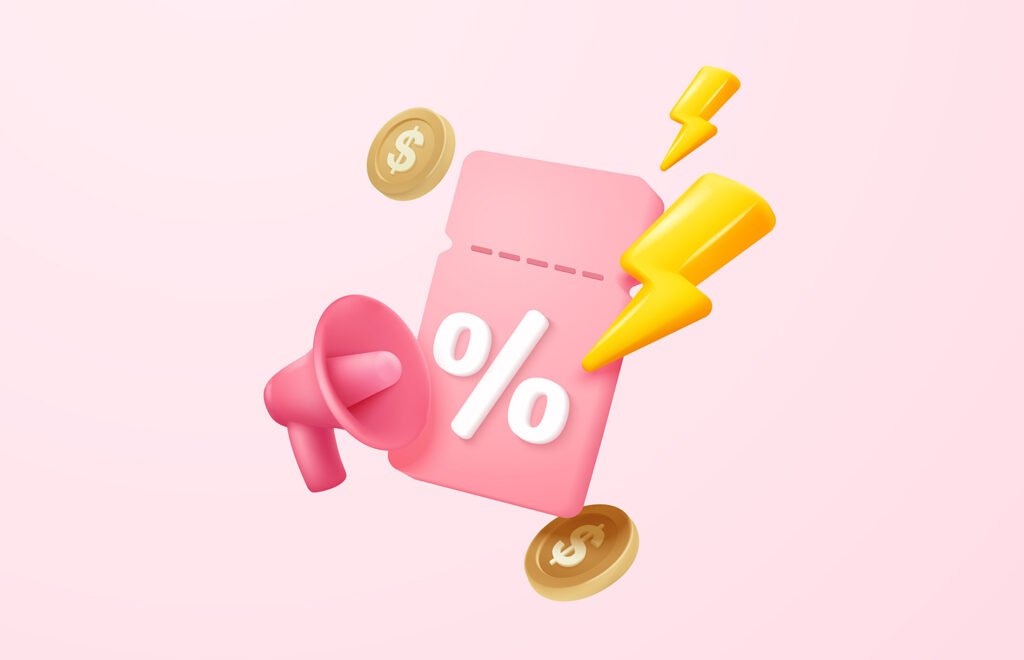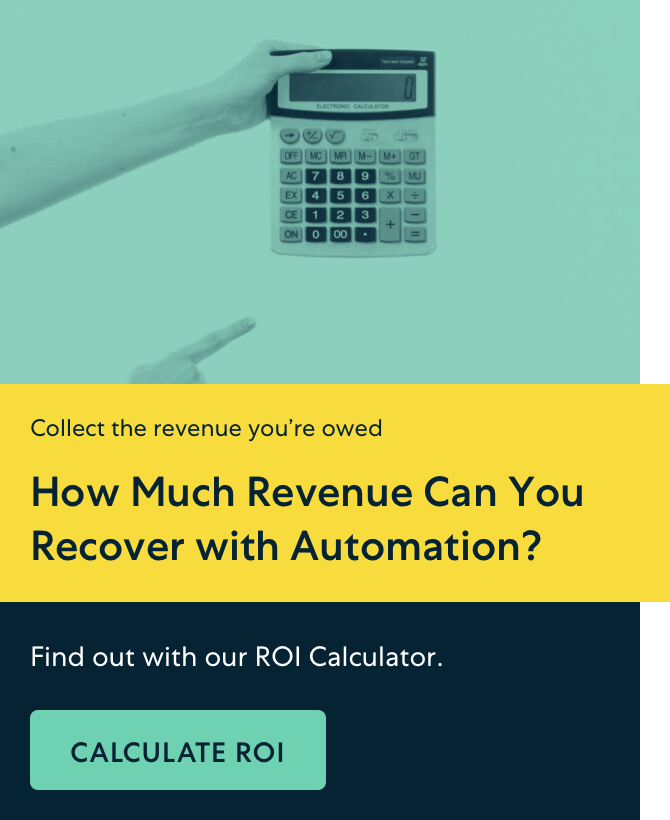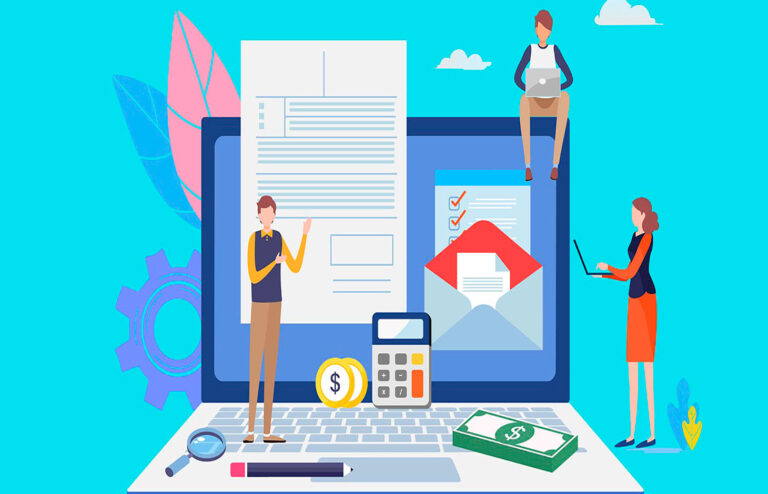The SaaS industry is booming—especially in the U.S. With SaaS revenue projected to reach $135 billion in 2023 at an annual growth rate of 5.49%, software-as-a-service is here to stay.
Ensuring both short-term and long-term success as a SaaS business, however, is easier said than done. Plus, a key factor of your growth strategy is your pricing strategy. But why?
SaaS growth can be defined as your customer acquisition rate multiplied by your average customer lifetime value (LTV), so pricing plays a critical role in long-term growth. However, finding the sweet spot to charge customers can be tricky. Charge too little, and your profit margins may be shot. Too much, and you may alienate your target audience.
Even once you’ve settled on the price of a product, you may want to run a promotional pricing strategy at one point. From flash sales and discounted prices to longer seasonal sales, there are different methods of trying to improve your market share or brand image, penetrate new markets, and boost sales. However, poor execution could mean you end up with reduced customer loyalty if long-term customers feel underappreciated. Needless to say, it’s a fine line to balance.
Need help with finding the ever-elusive sweet spot? In this article, we’ll cover everything you need to know about SaaS pricing models and different types of promotional pricing for your SaaS business.
TL;DR
- Whatever pricing model you go for—whether penetration, competitor-based pricing, or value-based pricing—spend ample time researching all factors that play a key role in your final pricing strategy.
- Offering a (limited-time) promotional period can help increase user acquisition and revenue, while also encouraging product adoption.
- Some types of promotional offers you can consider include discounted rates, bundle offers, and referral promotions; but make sure you regularly review and optimize your pricing strategy to maximize your cash flow.
Basic SaaS Pricing Models
While there are a plethora of pricing strategies available out there, here are the most popular ones:
- Penetration pricing: If you’re a new entrant in a SaaS niche, you may try this strategy, which means charging significantly lower than your competitors to onboard a huge amount of customers in a short period of time. Of course, this isn’t sustainable in the long-term and can dilute your value perception, but helps with quickly penetrating new markets.
- Competitor-based pricing: This strategy factors in the prices of competitors in the same niche. While you may ultimately charge slightly more or less, the public information plays a key role in your final pricing. A downside is that the pricing won’t have been tailored to your unique SaaS product or service, which could weaken your positioning.
- Value-based pricing: This strategy puts customers at the center of everything. It requires having a deep understanding of your consumer behavior and the value they believe your product holds, then charging them accordingly—even if it’s higher than what your competitors charge. This may involve, for example, using pricing tiers aimed at different customer segments, and could even allow you to upsell to your customers.
Whatever you go for, remember to spend an ample amount of time researching your target audience, macroeconomic situations, your competitors, and other relevant factors that will play a key role in your final pricing strategy.
Why Should You Consider SaaS Promotional Offers?
So you’ve found the perfect pricing model: it’s custom-tailored to your different target audiences, and both your business and customers are happy with the price, allowing you to pad out your customer LTV and grow sustainably. Why should you consider lowering prices?
- Increasing user acquisition and revenue: Customer acquisition costs in the SaaS industry are high. While it varies per niche, numbers can run as high as $1,450 per customer for smaller financial companies. A great way to rapidly increase customer traffic in a short period of time is to offer discounted pricing, significantly saving on your acquisition costs. If customers are required to stay on a contract for at least a year, this could also increase your monthly recurring revenue significantly.
- Encouraging product adoption: Once you’ve acquired a round of new customers that’re locked in for a certain amount of time, you can help showcase the true value of your product or service. This gives you, say, a year to help foster brand loyalty and convert your new customers into hardcore brand evangelists.
That said, a promotional pricing marketing strategy also involves finding the sweet spot. If you slash prices by 50%, new customers’ first impression will be that your product is worth 50% less than the full price, and may churn when the promotion period ends. Plus, your current customer base may feel like they can get better value elsewhere if they see the reduced prices for new customers only, which could mean they’d hop over to one of your competitors.
In short, while there are definite advantages to promotional pricing, make sure you never degrade the value and price perception of your product, and you continue to value your loyal customers.
Types of Promotional Pricing Strategies
Ready to take a leap into the world of SaaS product promotions? Here are our favorite types of SaaS product/service promos, along with a real-life example to boot.
Discounted rates
Discounts should be limited—this can mean that new customers either have a set timeframe to make use of the discount, or that the promo runs indefinitely, but once activated, only runs for a limited amount of time.
Whatever approach you go for, it’s important to foster a sense of scarcity: if you offer steep discounts regularly, (potential) customers will associate the discounted price as the regular price and have no incentive to take action and sign up. Remember, the goal is ultimately to increase your LTV and average subscription value.
An interesting twist on the discounted rate is how Dropbox offers eligible users up to 100GB of additional Dropbox storage space. By purchasing a laptop with Dropbox on it, customers would be able to redeem extra storage space for free—a serious bargain. However, after a year, the storage space would expire and users would go back to the plan they had before the one-off deal.
Freemium to premium upgrades
SaaS upselling involves offering an upgraded version of a SaaS product (like a paid or pricier version). The most effective way to upsell is to offer limited-time access to premium features, so customers can experience what they’re missing out on. You could also pair it with a discount for transitioning users for a fixed amount of time—like Evernote does with its emails that provide a sneak peak about what Evernote Premium/Plus features, while offering a discounted price on a 1-year plan.
Bundle offers
By packaging multiple products or services at a discounted price from what they would cost individually, you can make a bundled solution look like an attractive alternative. For example, a monthly subscription for Photoshop, InDesign, and Illustrator each costs $20.99, but if you purchase a Creative Cloud All Apps subscription, you can access over 20 apps for just $54.99—making the bundle the clear solution for anyone that needs more than 3 Adobe apps.
Loyalty and referral promotions
While the simplest way to reward long-term users is by offering a discount—and it can be used sparingly—our preferred method is providing discounts or offers to customers that provide referrals. For example, Airtable provides a $10 worth of credits for each customer referral, which can be used to reduce the cost of a paid subscription.
Ensuring Success with Promotional Pricing Strategies
Don’t jump the gun and start implementing a promotional strategy without doing the proper research—you may end up losing money or brand loyalty. Instead, segment your target audience (whether it’s prospective, new, or current customers) to determine what kind of promotional strategy to implement.
Next, set a limit for how long the promotion will run, and whether it’ll be applicable to new products, services in a higher price tier, etc. (Remember, you want to build a sense of urgency!) In other words, help your customers understand why they should pay for what you’re offering.
Success can mean different things, so to help quantify and measure what success means for you, determine what KPIs you want to meet before you launch your campaign. Whether it’s a 15% increase in recurring revenue, 30 new signups, or a customer success metric, make sure you regularly review and optimize your pricing strategy to maximize your cash flow.
Conclusion
One thing is certain: a well-researched pricing plan is the cornerstone of a SaaS business that wants to be sustainable in the long run. When you carefully implement research-backed promotional pricing strategies, you provide true value that resonates with your target audience—while simultaneously driving revenue.
With Stax Bill, you don’t have to do it alone. Thanks to our automated subscription and payments platform, you can access powerful features to supercharge your billings and SaaS pricing strategy experience, like subscription management, ASC 606-compliant recurring revenue recognition, subscription analytics and much more. And with upfront subscription-based pricing, launching a successful promotional pricing strategy has never been easier. Schedule your Stax Bill demo now.
FAQs about SaaS Promotional Pricing
Q: What is the growth forecast of the SaaS industry?
The SaaS industry is projected to reach $135 billion in revenue by the year 2023, with an annual growth rate of 5.49%. This indicates a booming trend in the software-as-a-service market, especially in the US.
Q: Why is pricing strategy critical for SaaS growth?
SaaS growth is primarily defined by your customer acquisition rate and your average customer lifetime value (LTV). Hence, pricing plays a critical role in long-term growth by influencing both these factors. The challenge lies in finding the right price point to balance profitability and customer acceptance.
Q: What are the potential benefits of a promotional pricing strategy for my SaaS business?
Promotional pricing strategies can help improve market share, enhance brand image, penetrate new markets, and boost sales. However, it should be handled carefully to avoid damaging customer loyalty or devaluing your product or service.
Q: What are some popular SaaS pricing strategies?
Some popular SaaS pricing strategies include penetration pricing, competitor-based pricing, and value-based pricing. Penetration pricing involves charging significantly lower than your competitors to gain a large flow of customers, competitor-based pricing looks at the prices of competitors and adjusts accordingly, while value-based pricing focuses on understanding the perceived value of your product by the customers and charging accordingly.
Q: How can an effective promotional pricing strategy help increase user acquisition and revenue?
An effective promotional pricing strategy can attract more customers within a shorter period, thereby reducing customer acquisition costs. If these customers are tied to a contract for a certain period, it can significantly increase monthly recurring revenue.
Q: What are potential risks of excessive promotional pricing in the SaaS industry?
Excessive promotional pricing can lead to price perception problems. For instance, when a product is regularly offered at a heavily discounted price, customers may perceive the discounted price as the product’s actual value. Then when the promotion period ends, they may see the regular price as an increase rather than a return to regular pricing, which could lead to higher churn rates.
Q: What types of promotional offers are popular in the SaaS industry?
The SaaS industry commonly uses a variety of promotional offers such as discounted rates, bundle offers, and referral promotions. Discounts can greatly increase customer traffic, bundle offers make multiple services more attractive, and referral promotions reward customers for bringing in new clients.
Q: What are the key points to consider when developing a promotional pricing strategy?
When developing a promotional pricing strategy, it is essential to consider factors like target audience segmentation, promotion duration, application scope of the promotion, and desired KPI targets. Regular review and optimization of the strategy are also crucial for ongoing success.
Q: How can a well-designed promotional pricing strategy contribute to sustainable financial growth for a SaaS company?
A well-implemented pricing strategy balanced with effective promotional pricing can enhance your SaaS business’s credibility and customer perception. Simultaneously, it drives revenue and increases long-term sustainability by sparking interest and incentivizing potential customers.
Q: Are there tools or platforms to facilitate the management of SaaS pricing strategies?
Yes, there are automated platforms like Stax Bill that can ease the management of subscription and payments system. They offer features like recurring revenue recognition, subscription analytics, and much more, making the management of pricing strategy much more convenient and efficient.







